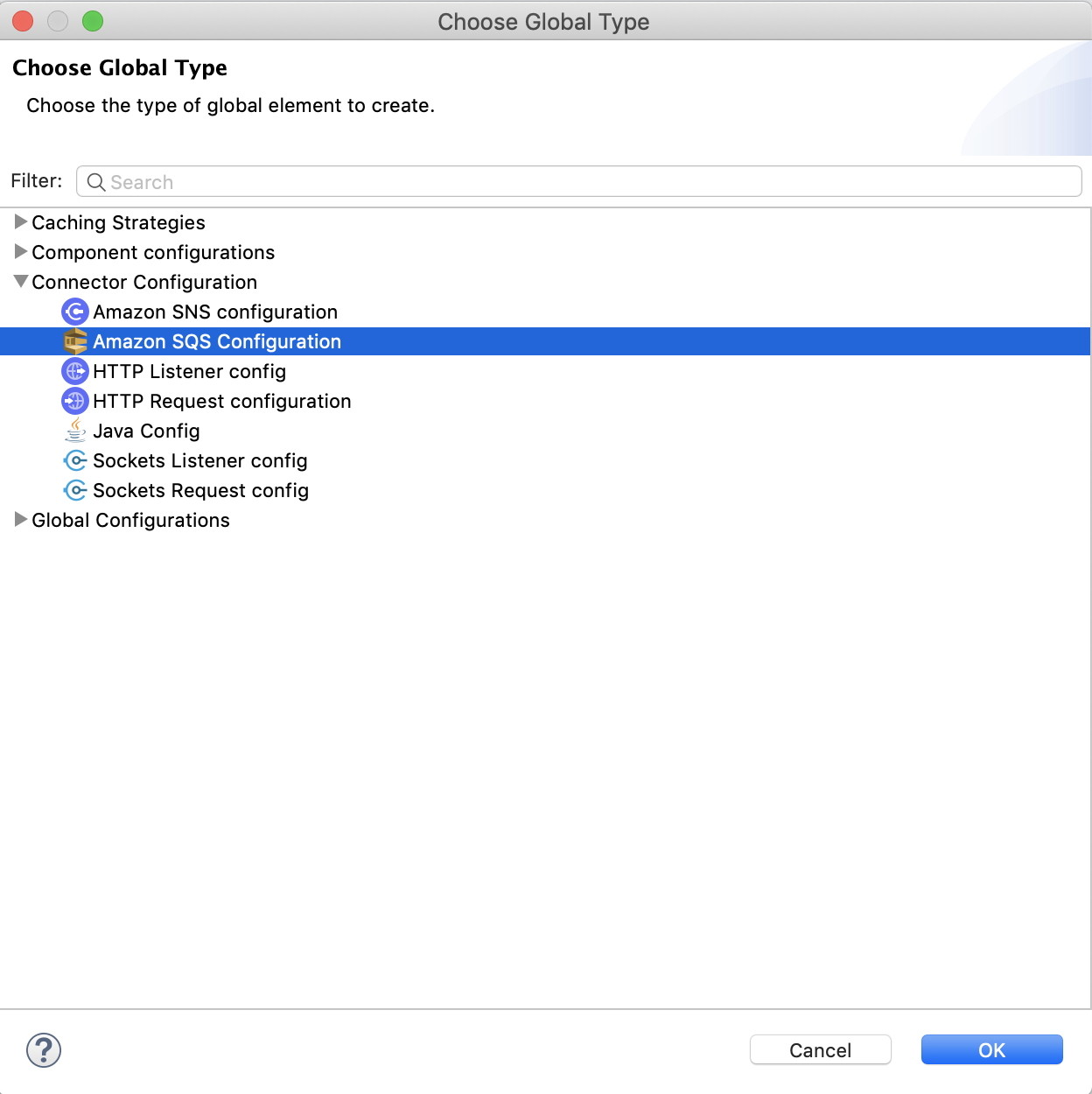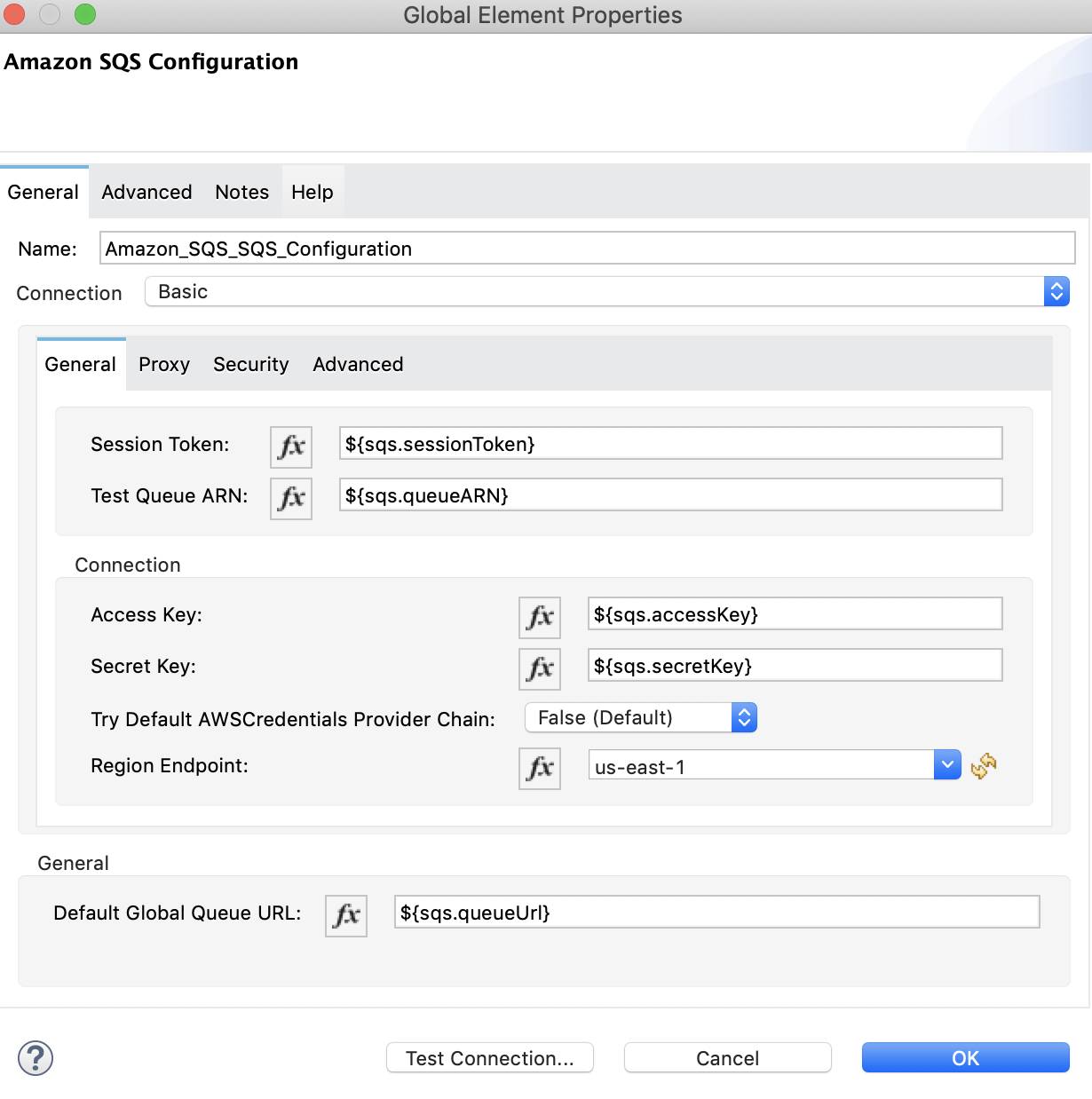
Amazon SQS Connector 5.7 Studio Configuration
To configure a connector in Anypoint Studio:
-
Install the connector.
-
Configure an input source for the connector.
-
Configure the connector.
Install the Connector
Installing the connector adds it to a Studio project. Anypoint Studio provides two ways to install a connector:
-
Use the Exchange application in the Studio taskbar.
-
Use the Exchange icon in the Mule Palette view.
Install the Connector from the Studio Taskbar
-
In Studio, create a Mule project.
-
Click the Exchange icon (X) in the upper left of the Studio task bar.
-
In Exchange, click Login and supply your Anypoint Platform username and password.
-
In Exchange, search for
Amazon SQS. -
Select Amazon SQS.
-
Click Add to project.
-
Follow the prompts to install the connector.
Configure an Input Source
Configure an input source for the connector, such as a connector operation, HTTP Listener, or Schedule.
If you use the Receive Messages input source in cluster mode and want to receive messages on the primary node only, select the Primary node only field of the Advanced sub-tab on the Receive messages tab. For more information, see Receiving Messages in Cluster Mode.
Configure the Connector
To use Amazon SQS Connector in your Mule application, configure a global element that can be used by all Amazon SQS Connectors in the application.
-
Drag a connector operation onto the Studio canvas.
-
To create a global element for the connector, click the Global Elements tab at the base of the canvas, and then click Create.
-
In the Choose Global Type window, expand Connector Configuration and select Amazon SQS Configuration:

-
Click OK.
-
Specify the global element properties.
You can either enter your credentials into the global configuration properties or reference a configuration placed in a file in the
srcfolder of your project file that contains these values. For simpler maintenance and better reuse of your project, use a configuration file:
-
Configure the parameters as follows:
Field Description Name
Name used to reference the configuration
Session Token
Session token used to validate the temporary security credentials
Access Key
Alphanumeric text string that uniquely identifies the user who owns the account
Secret Key
Key that acts as a password
Try AWS Credentials Provider Chain
Drop-down menu that controls whether temporary credentials should be used
Region Endpoint
Regional endpoint to process your requests
Default Global URL
URL of the Amazon SQS queue to act upon
When you provide a queue URL in the Default Global Queue URL field of the global element, the connector automatically creates the queue and sets the URL of this queue as the provided value. All Amazon SQS message processors that reference the global element perform operations using this queue URL.
To reference a different queue URL for a particular message processor in the flow, perform the operation using the
Queue URLattribute provided by the message processor. -
Leave the default entries for the Proxy tab.
-
Click Test Connection to confirm that the parameters of your global configuration are accurate and that Mule is able to connect successfully to your instance of Amazon SQS.
-
Click OK.
Next Step
After configuring this connector in Studio, see the Additional Configuration Information topic for more configuration steps.



